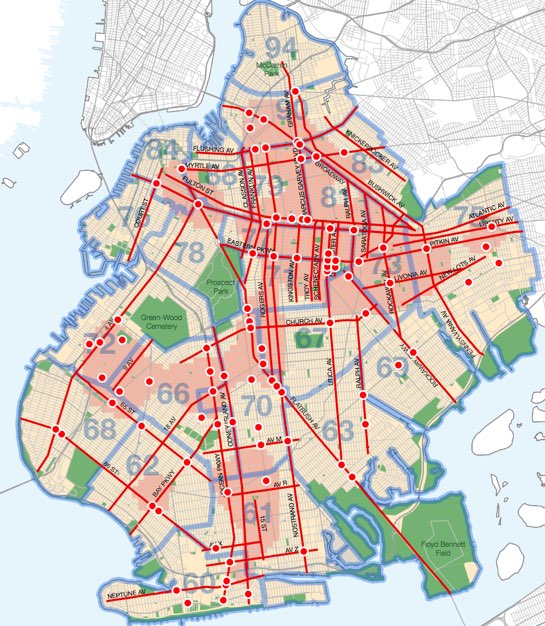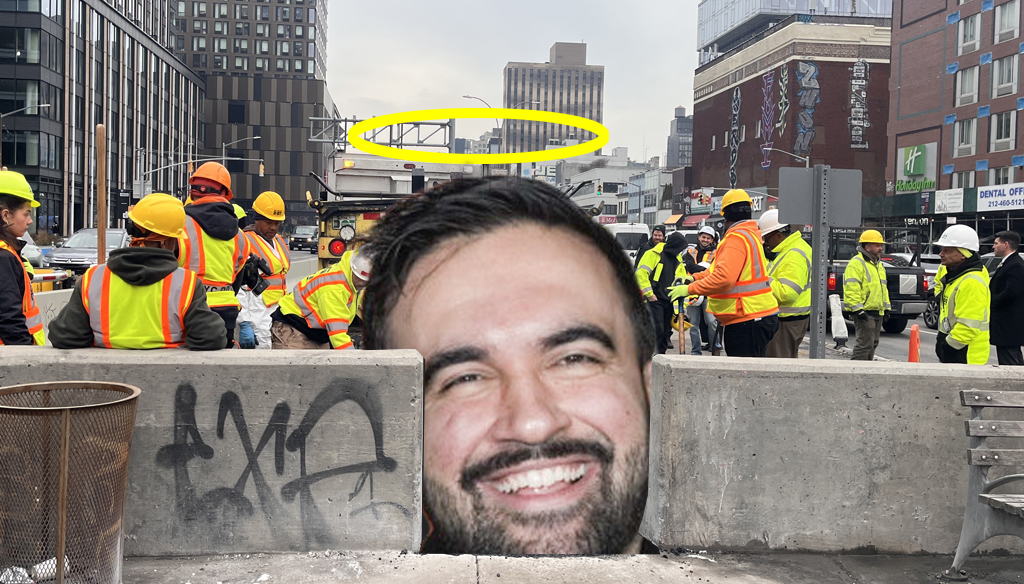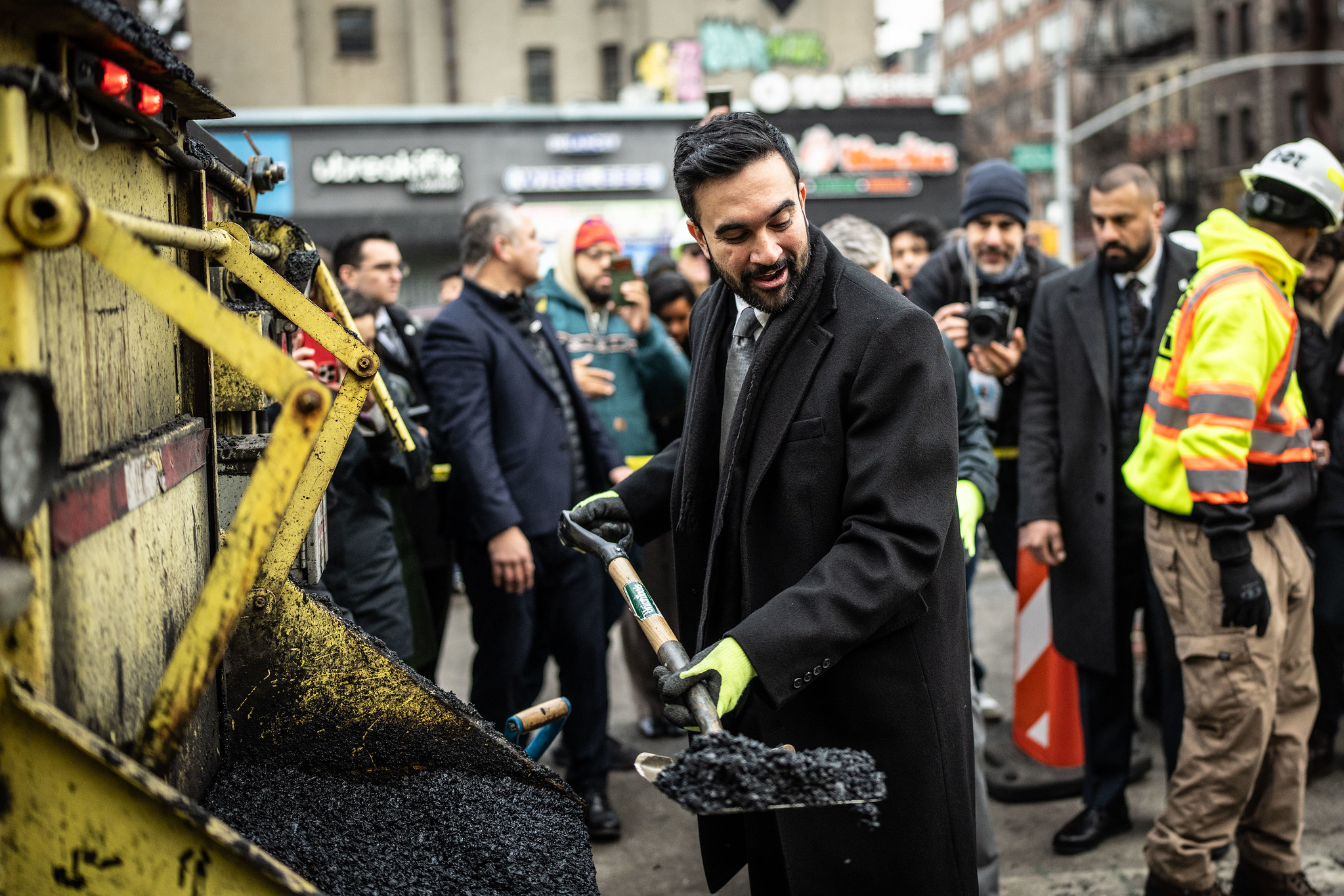
DOT released its Vision Zero pedestrian safety plan for Brooklyn today. As with analyses issued earlier this week of Queens, Manhattan, and the Bronx, the Brooklyn report [PDF] singles out streets, intersections, and swaths of neighborhoods where motorists make it especially dangerous to walk.
Judging by the “priority map,” most major streets in Brooklyn are in need of safety improvements. Forty-nine “priority corridors” and 91 “priority intersections” account for over half of crashes that kill or seriously injure pedestrians. In addition, DOT identified 17 square miles of “priority areas,” where 40 percent of serious crashes occur. Those include Crown Heights, Brownsville, Sunset Park, and Borough Park.
Other factoids from the Brooklyn report:
- Reckless driver behaviors including speeding, failure to yield, running red lights, and distracted and drunk driving cause or contribute to 65 percent of Brooklyn pedestrian fatalities.
- Drivers leave the scene in 25 percent of fatal pedestrian collisions.
- Almost one in five pedestrian deaths in Brooklyn occur between midnight and 6 a.m., and 33 percent happen on weekends -- times when Albany restrictions forbid the city to use speed cameras.
- Drivers of passenger vehicles are involved in 75 percent of pedestrian deaths, the most of any vehicle type by far, followed by truck drivers (9 percent of fatal crashes) and bus drivers (4 percent).
- Seniors account for 12 percent of Brooklyn’s population and 36 percent of pedestrian fatalities.
- Drivers who hit child pedestrians are the second leading cause of injury and death for school-age children in Brooklyn.
As in the rest of the city, Brooklyn “arterials” are the most deadly places for walking. Streets including Atlantic Avenue, Ocean Avenue, and Fourth Avenue make up just 14 percent of the Brooklyn road network, but are the site of 60 percent of pedestrian fatalities.
The Brooklyn action plan is, again, short on specific fixes. In addition to measures outlined in all five reports -- like new signage and lighting, leading pedestrian intervals, traffic signal timing -- DOT says it will install 60 new speed humps in Brooklyn each year, and will work to prioritize neighborhood Slow Zones in the borough.





